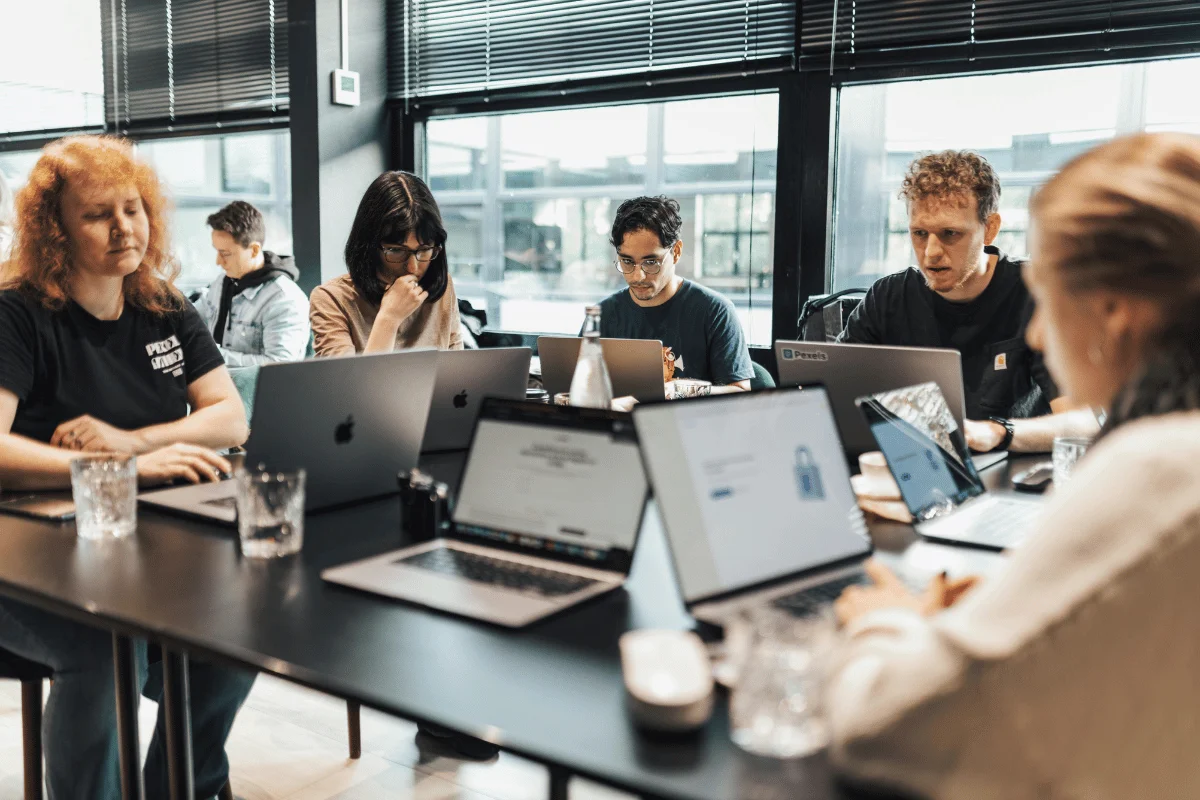
Backlinks remain one of the most crucial SEO ranking factors, and having multilingual backlinks can further boost your reach. However, implementing a multilingual link-building strategy isn't always an easy task.
You need to target different language markets with culturally relevant content and collaborate with the local businesses.
In this blog, we’ll explore how multilingual link building works, why it’s essential for growth, and practical strategies to earn valuable backlinks that strengthen your brand’s presence across borders.
Looking to obtain high-quality backlinks? Consider working with professionals.
When you partner with us at Profit Engine, we manually reach out to secure top multilingual guest posts in your target region. Our team also places in-content links within the flow of existing content.
Start your free strategy call, and let's partner to build authoritative and relevant links in multiple languages.
Multilingual link-building involves acquiring backlinks from websites in multiple languages to improve search engine rankings.
Let's say you're an American B2B SaaS business that offers project management solutions. Your goal might be to expand your reach into markets such as Spain and Germany.
You can localize your pages into Spanish and German. Then, pitch guest posts and collaborate with native bloggers. With these tactics, you can acquire language-targeted backlinks and enhance your audience's trust.
If your brand is targeting audiences that speak multiple languages, here's how multilingual backlinks can help:

At its heart, building quality backlinks in different languages requires you to tie all the elements below:

Several techniques can help you build quality links across various language markets.
Let’s look at the top techniques along with the tools to help you find the link-building opportunities:
Craft content that reflects the local search behavior, culture, idioms, and preferences.
Begin by identifying your top competitors' backlinks, search volume, and keyword competition across various languages using tools like SE Ranking. Use this data to create content that resonates with your audience, making it more likely to earn backlinks.
You can also create content around local news, holidays, and festivals. Use Google Trends to spot emerging, newsworthy topics.
Write guest posts on local websites to acquire relevant links. Start by identifying popular local blogs in your target market that accept guest posts.
Then, craft informative and culturally relevant content for the sites, ensuring it aligns with the audience's interests and values.
Reach out to local influencers and bloggers with an established audience.
Their endorsements and links to your site can amplify your brand visibility. Collaborate with them to create product reviews or video tutorials that their audience will love.
You should contact regional directories and submit your business or website for listing in your target area.
For example, you can use directories like Gelbe Seiten in Germany as a valuable source of links.
Participate in local forums and communities that are relevant to your industry. Here, you can provide valuable insights, showcase your skills, or join in on discussions.
When you consistently engage, you can build relationships and earn backlinks over time.
PR campaigns can help you generate backlinks from news sites and online publications. You can write multilingual press releases that speak directly to each local market.
Target local publications, including newspapers, magazines, online regional news sites, and industry-specific blogs relevant to your region.
Create content in local time zones and utilize social media to establish trust with your target audience and secure region-specific backlinks.
Remember to choose the right platforms, which vary according to country. For example, if you're targeting China, popular platforms are WeChat and Weibo, and in Germany, the audience prefers Xing.
Simply creating content for your target language isn't enough. You need to learn the ins and outs of regional search engines, such as Baidu, Yandex, and Naver. Understand the different rules and how users behave.
Select the right country-specific domain (ccTLD) and use the correct hreflang tags to help search engines display the target language in each page.

There are unique challenges in linking across languages.
Check out these most common blunders (and their solutions):
Focus on a complete website translation to expand your reach to the target audience and increase the likelihood of acquiring backlinks.
The solution is to obtain backlinks from authoritative local language websites, as search engines prioritize content in the local language.
Prioritize optimizing your content to suit different search engines for optimal results.
Instead, conduct thorough market research to stay informed about changing trends and the evolving needs of your target market.
So, don't just translate. You should make your content feel authentic and relatable by partnering with professional translators to incorporate everyday phrases, idioms, and humor that resonate with your audience.

At Profit Engine, we deliver customized link-building services and help businesses scale into previously untapped global markets.
Here's what sets us apart:

Get answers to the questions most often asked about multilingual link-building:
Here's a comprehensive comparison between multilingual and multiregional link-building:
Yes, you can use AI tools like ChatGPT and Google Translate to translate your web content into other languages.
However, we recommend working with native speakers or a professional translator who understands idioms, humor, and regional preferences. This ensures your content resonates with the target audience and is culturally appropriate.
When it comes to multilingual SEO, Google prefers native language backlinks. Google views them as a signal of topical relevance, and they establish native authority.
No. Anchor text guidelines aren’t the same across languages.
While you need to maintain context and relevance, anchor texts majorly differ in keywords and word order in different languages.
To get ideas, look at which anchor text the local competition is using.
Absolutely! A single domain can rank in multiple languages by following these SEO tips:
Multilingual link-building is worth the effort if you want to rank in new languages.
Though challenges exist, a well-executed multilingual link-building can deliver transformative results. So, focus on partnering with international influencers and creating localized, translated content.
That said, strategic link-building supported by professional expertise can amplify your global reach.
Consider partnering with us at Profit Engine to connect with international bloggers in your target country and discover other link-building techniques. We scrutinize each link to safeguard against actions that could compromise the effectiveness of your link-building campaign.
Get in touch and let us handle the heavy lifting for you!